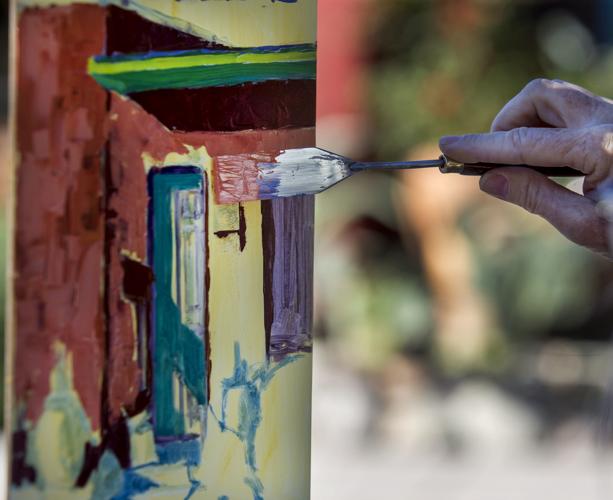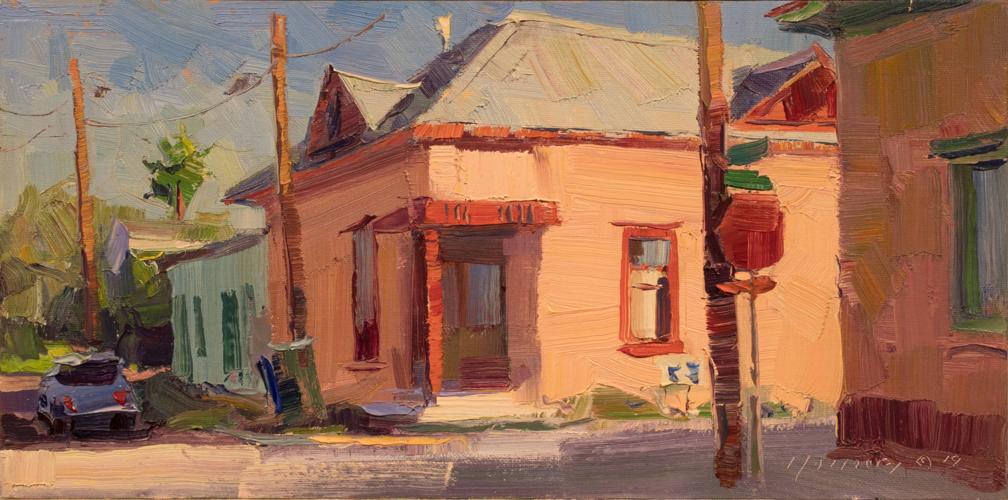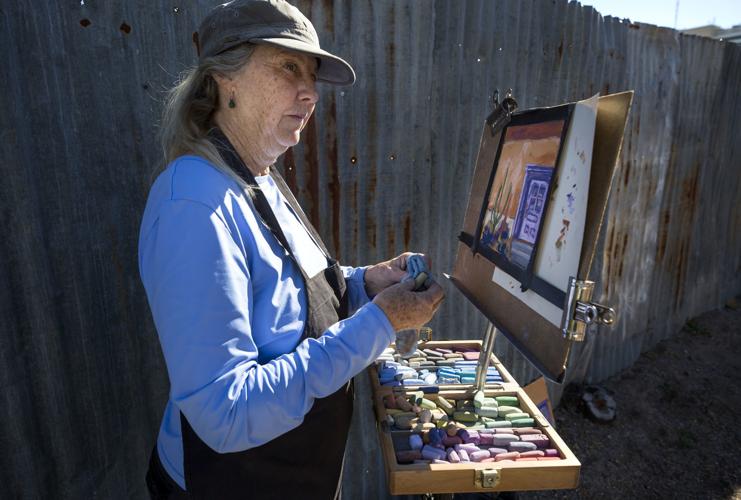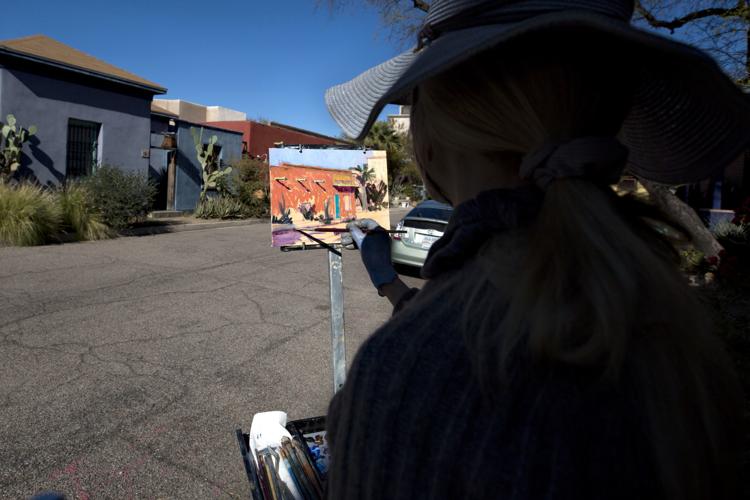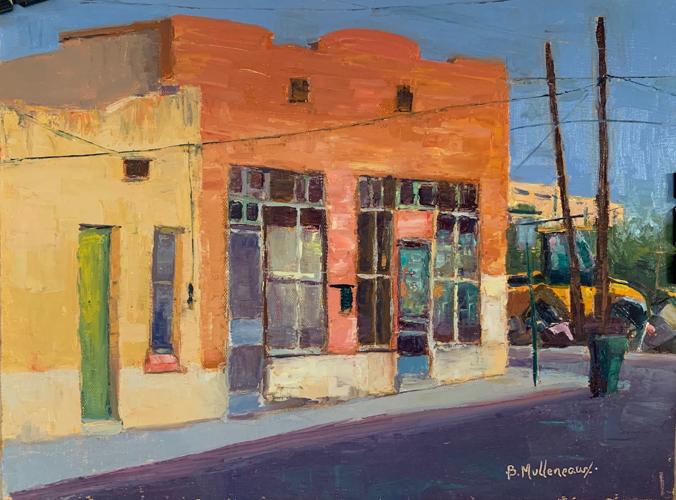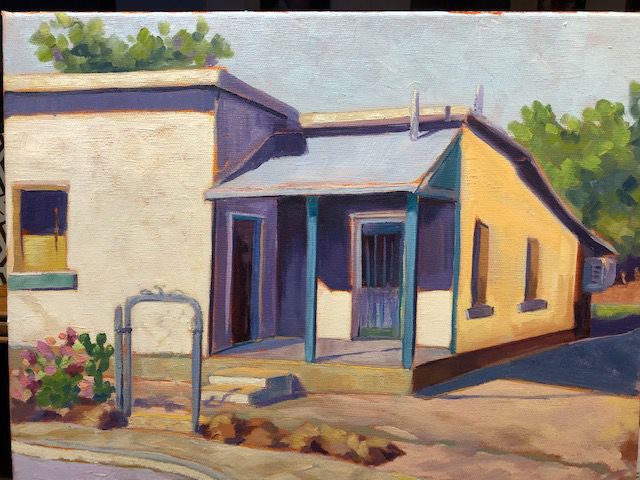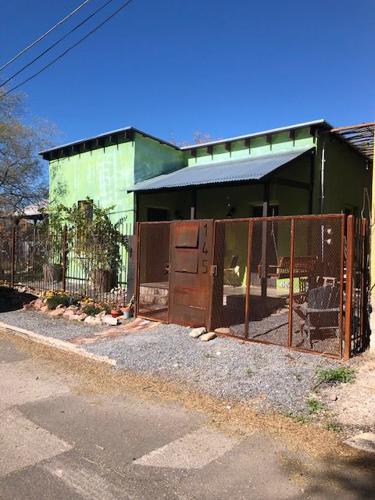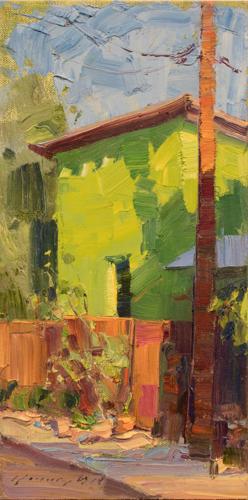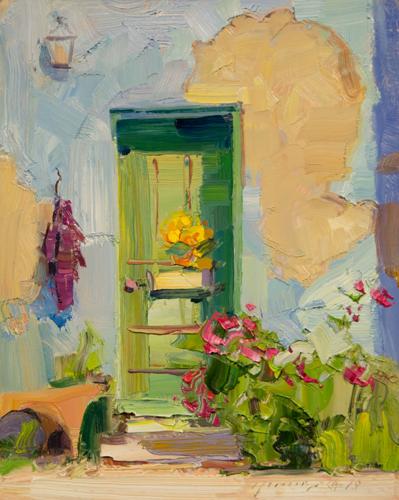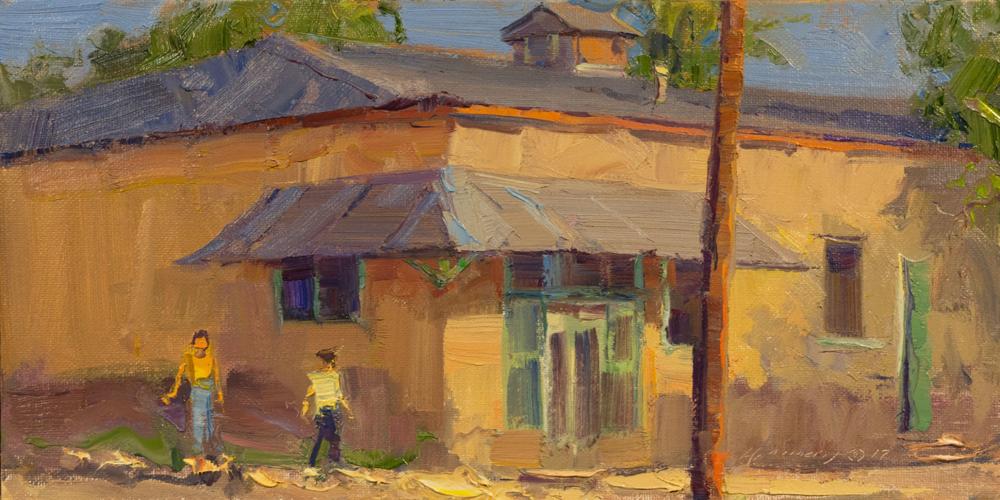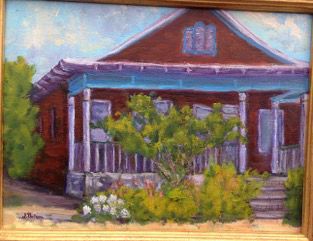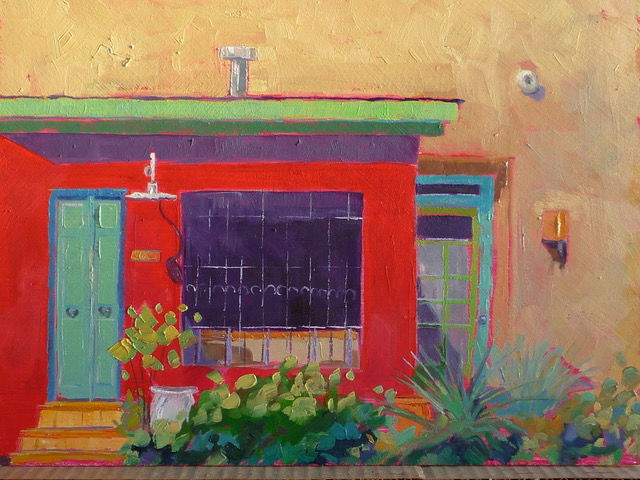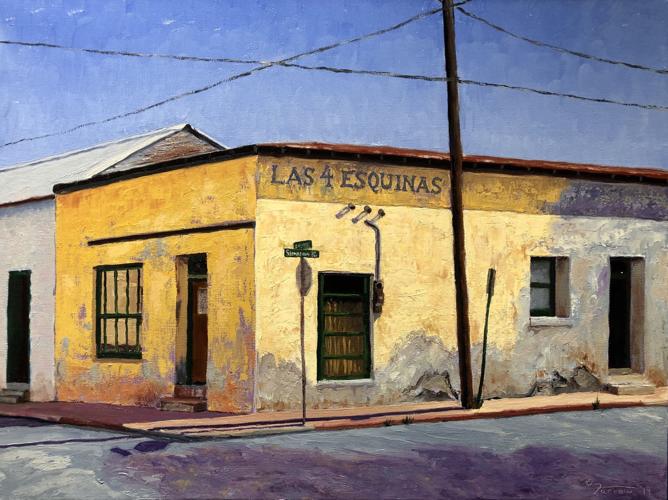Brushstroke by brushstroke, the Tucson Barrio Painters are documenting pieces of the Old Pueblo’s history.
In the early Sunday morning light, the plein-air artists set up easels, paints and brushes outdoors in historic Tucson neighborhoods and depict crumbling adobe, cracking stucco, and the bright, bold and faded colors of historic neighborhoods, homes and buildings.
The group is creating images before the buildings’ cracks are re-stuccoed and the homes are polished up, says artist Sandra Montgomery
“We’re recording the barrio visually and architecturally,” says Norm Sherwood, Barrio Painters member.
The casual collective was organized about three years ago by Denyse Fenelon, who has been painting in Tucson since moving here in 2001.
“I noticed a significant uptick in construction activity in the neighborhoods due to, I’m sure, the changes with the urbanizing of the downtown area” Fenelon says. “I see us celebrating and chronicling the various barrios in Tucson.”
The Barrio Painters currently have an exhibit of about 30 pieces at Tucson International Airport. “The Heart of Tucson” show was in the airport’s Center Gallery from July 1 through Sept. 27, says Viki Matthews, airport spokeswoman. The (mostly) the same exhibition opened in the airport’s Upper Link Gallery on Dec. 16, and the show was extended through April 30.
“There’s no mystery about the extension; it’s simply because the exhibition has been extremely well-received,” says Matthews. “And we really think they do a great job of showing off just how beautiful the architecture is in the neighborhoods adjacent to downtown Tucson.”
PAINTING HISTORY
Barrio Painters, which began with a few artist members of the Sonora Plein Air Painters, usually bring their brushes to neighborhoods near Meyer Avenue and Cushing Street or around the Tucson Museum of Art. They have also painted in the Armory Park and West University neighborhoods.
Fenelon and group members recently painted the seven 100-year-old bungalows on Broadway west of Campbell Avenue, which were fenced off in preparation for the widening of Broadway.
“I was afraid they would be torn down,” before they could be painted, says Fenelon.
The bungalows probably would have been torn down, but the city gave the buildings to the Rio Nuevo Multipurpose Facilities District, the Star reported in October. The buildings are being moved out of the construction and right-of-way zones, and Rio Nuevo plans to refurbish them.
Sometimes Barrio Painters are too late. Fenelon says one morning she headed over to paint Spanish restaurant Casa Vicente, 375 S. Stone Ave., and it was gone. The sign remained, but the building had been demolished.
In addition to architecture, Tucson ecologist and artist Lee Ann Woolery’s interest is the flora of the area. “Plants are older than the buildings,” she says.
THE NEIGHBORHOODS
Sunday mornings, sans the hustle and bustle of business activity, are quiet, and Barrio Painters say they become in tune with the rhythms of the neighborhoods — families walking to church, dog walkers, joggers, bicyclists, the homeless.
Tucson artist Greg Wallace describes the experience as “meditative,” as being outside in the neighborhood puts the painter “in the moment.”
The neighborhood residents are often curious about and receptive to the Barrio Painters’ work, the artists say.
A resident asked Fenelon about her painting on a chilly morning. After Fenelon explained the effort, the resident went inside and returned with a cup of hot chocolate and a fresh, homemade churro.
Artist Barbara Mulleneaux says residents have come out of their homes to share anecdotal information about the property’s and family’s history, and what they are doing to improve or make the buildings more habitable.
Sometimes extended families wander by just to “look at the old neighborhood,” says artist Peter Farrow.
CASUAL COLLECTIVE
Barrio Painters is a casual collective — just “show up and paint,” says Fenelon. Sometimes five artists show up to paint; other times there are 15.
A few group members are full-time artists; others have day jobs. The painters gather for coffee and discussion before heading out to paint in the winter months and meet after painting during the heat, says Montgomery.
The group is supportive, which is important, says Farrow. The artists critique one another’s work, offering suggestions and criticisms, and “lean on” members when show deadlines are approaching.
“You don’t have to paint a masterpiece in two hours,” says Barrio Painters member Chris Griffin-Woods, noting the collective is not judgmental and welcomes all skill sets.
The palettes include oils, acrylics, watercolors and pastels. Slow-drying oil paints work well in the outdoors, especially in the rain, says Fenelon. Oils are the classic plein-air medium used by French impressionists Claude Monet and Pierre-Auguste Renoir. Watercolors dry quickly in the arid, warm Tucson air.
Painting in the fresh air is “ephemeral,” says Farrow.
As outdoor light cannot be controlled as it is in studios, the time frame to paint before light changes is limited. If an artist hasn’t finished a piece, he or she can return to the same spot the next week when conditions and the light are similar to complete the piece.
The works are often relatively small, usually 8 inches by 10 inches or 9 inches by 12 inches, because it can be difficult to finish a large painting in a couple of hours of prime lighting, and lugging an oversize canvas to outdoor locations can be cumbersome.
NEXT STEPS
The Barrio Painters have had several shows at spots like the Tucson mayor’s office, Rancho Santa Cruz in Tumacacori and the Tucson Jewish Community Center.
When the airport show closes at the end of April, artists will pack up and take home the works that haven’t sold, but the pieces probably won’t be in the studio storage closet for long.
Fenelon is developing new showcases for the artists’ work and Tucson’s classic architecture. She’s looking at pop-up exhibits of works from specific neighborhoods in neighborhood venues and may partner with historic-home shows.



